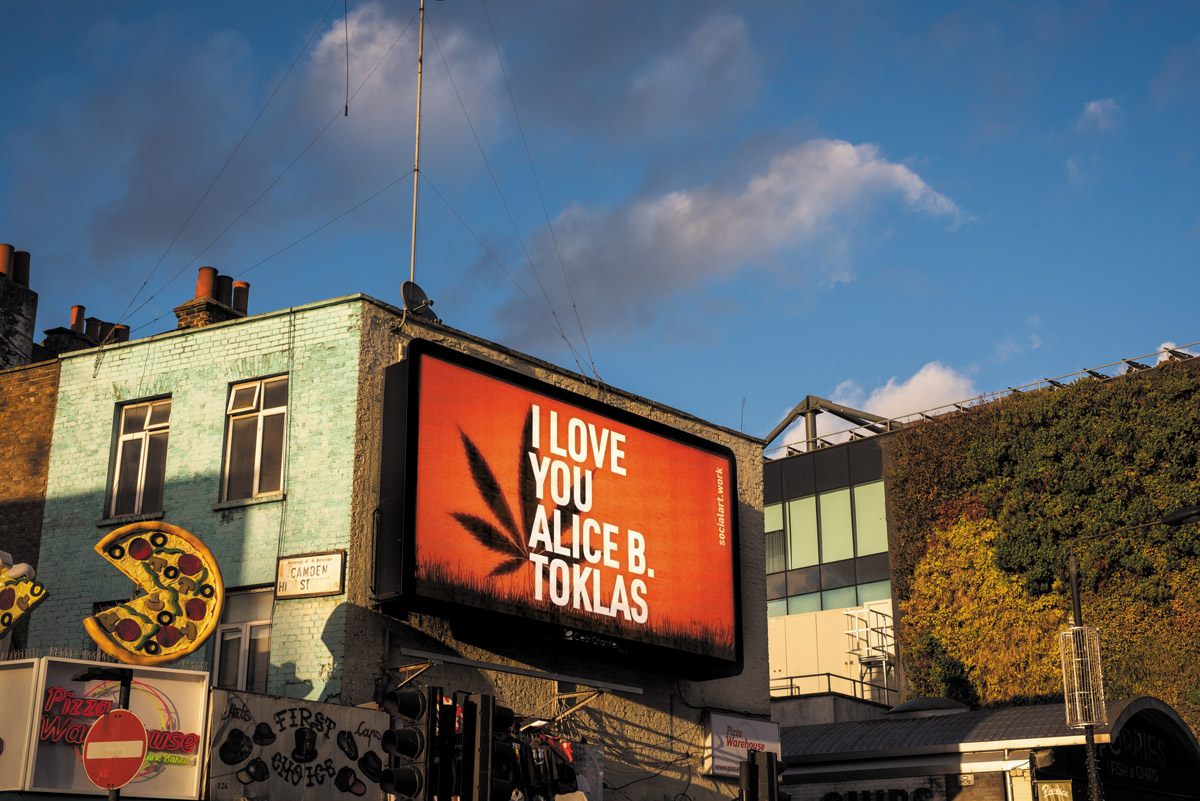We use the cookies _ga, _gat, _gid to collect anonymous data about how you use this site. OK.
I Love You Alice B. Toklas, 2020
A recipe for ‘haschich fudge’ appears in the
Alice B. Toklas Cook Book
first published in 1954. The recipe was given to Alice Toklas (1877-1967) by her friend, the British-Canadian artist, Brion Gysin (1916-1986).
Made from spices, nuts, fruit, and cannabis, ‘haschich fudge’ quickly became a sensation in its own right. Toklas described it as ‘the food of paradise’ and ‘easy to whip up on a rainy day’. She advised that it would produce extensions of anyone’s personality on ‘many simultaneous planes’.
As a result of her cook book’s success and this recipe’s infamy, Alice B. Toklas’ name became synonymous with, and slang for, marijuana.
An earlier prototype used an alternative slang term 'Mary Jane', and called for the legalisation of Marijuana. The image was of 'Freddie' a classic evocation of hippy look and lifestyle.
I Love You Alice B. Toklas
operates on multiple layers of meaning. The text itself, ‘I love you, Alice B. Toklas’, is taken from a 1968 film of that title starring Peter Sellers. The film’s title refers to the Toklas recipe, which plays a pivotal role in the film’s madcap plot:
Take 1 teaspoon black peppercorns, 1 whole nutmeg, 4 average sticks of cinnamon, 1 teaspoon coriander. These should all be pulverised in a mortar. About a handful each of stoned dates, dried figs, shelled almonds and peanuts: chop these and mix them together. A bunch of cannabis sativa can be pulverised. This along with the spices should be dusted over the mixed fruit and nuts, kneaded together. About a cup of sugar dissolved in a big patof butter. Rolled into a cake and cut into pieces or made into balls about the size of a walnut, it should be eaten with care. Two pieces are quite sufficient.
The text
I Love You Alice B. Toklas
can also be read as a tender tribute from the artist to Alice B. Toklas and her wife, the great American experimental writer, Gertrude Stein (1874-1946).
Firrell has said, ’I was born in Paris all over again when I discovered 27 Rue de Fleurus and the extraordinary lives and work of Gertrude Stein and Alice B. Toklas.’
In many ways, this final artwork in the
Counter Culture Rising
series can be seen as the public repayment of a debt, a way of saying ‘thank you’ for the inspiration of the Stein/Toklas marriage and the determination of these women to make their lives and their works on their own terms, regardless of the judgement of others.



